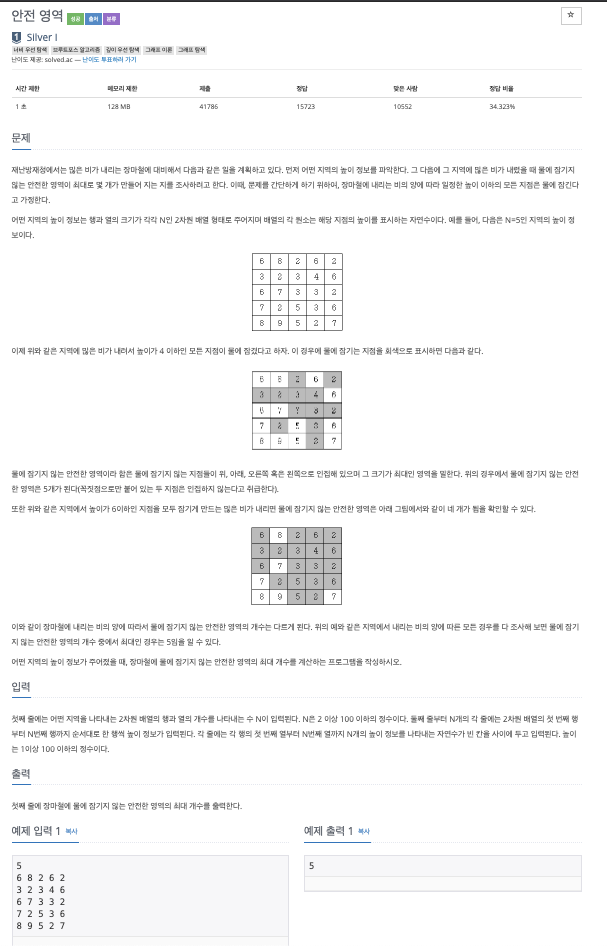문제

문제링크 : https://www.acmicpc.net/problem/2468
풀이전략
- 이 문제같은경우 비의 양에 따른 모든 경우의 수를 계산하여야하기 때문에 따로 체크배열을 만들어서 케이스에 맞게 확인해주어야한다.
- N은 100이하이므로 시간과 공간은 충분하다. 충분히 DFS로 계산하면 된다.
- dx, dy를 만들어주어 상하좌우를 확인한다.
코드
#include<bits/stdc++.h>
using namespace std;
int N;
// 순서대로 위 오른 아래 왼
int dy[4] = {-1, 0, 1, 0};
int dx[4] = {0, 1, 0, -1};
int a[102][102];
// 체크배열
bool ch[102][102];
// 결과
int res = 1;
// 내리는 비의 양
int standKey = 0;
void DFS(int r, int c){
for(int i=0; i<4; i++){
int rr = r+dy[i];
int cc = c+dx[i];
// 내리는 비보다 값이 커야 안전지대이다.
// 그 안전지대끼리 DFS를 한다.
if( !ch[rr][cc] && a[rr][cc] > standKey){
ch[rr][cc] = true;
DFS(rr,cc);
}
}
}
int main(){
ios_base::sync_with_stdio(false);
// freopen("../input.txt","rt",stdin);
cin >> N;
int myMin = 2147000000, myMax = -2147000000;
for(int i=1; i<=N; i++){
for(int j=1; j<=N; j++){
cin >> a[i][j];
// input에 가장 작은 값부터 가장 큰값까지 순차적으로 비의양을 계산해야한다.
if(a[i][j] > myMax) myMax = a[i][j];
if(a[i][j] < myMin) myMin = a[i][j];
}
}
for(standKey=myMin; standKey<=myMax; standKey++){
memset(ch, false, sizeof(ch));
int cnt = 0;
for(int i=1; i<=N; i++){
for(int j=1; j<=N; j++){
if( !ch[i][j] && a[i][j] > standKey){
ch[i][j] = true;
DFS(i, j);
cnt++;
}
}
}
if(cnt > res) res = cnt;
}
cout<<res<<endl;
return 0;
}
소감
결국 비의 양보다 큰 값들을 찾아야하는 것만 새로울 뿐 그동안의 DFS문제와 거의 비슷하였다.
